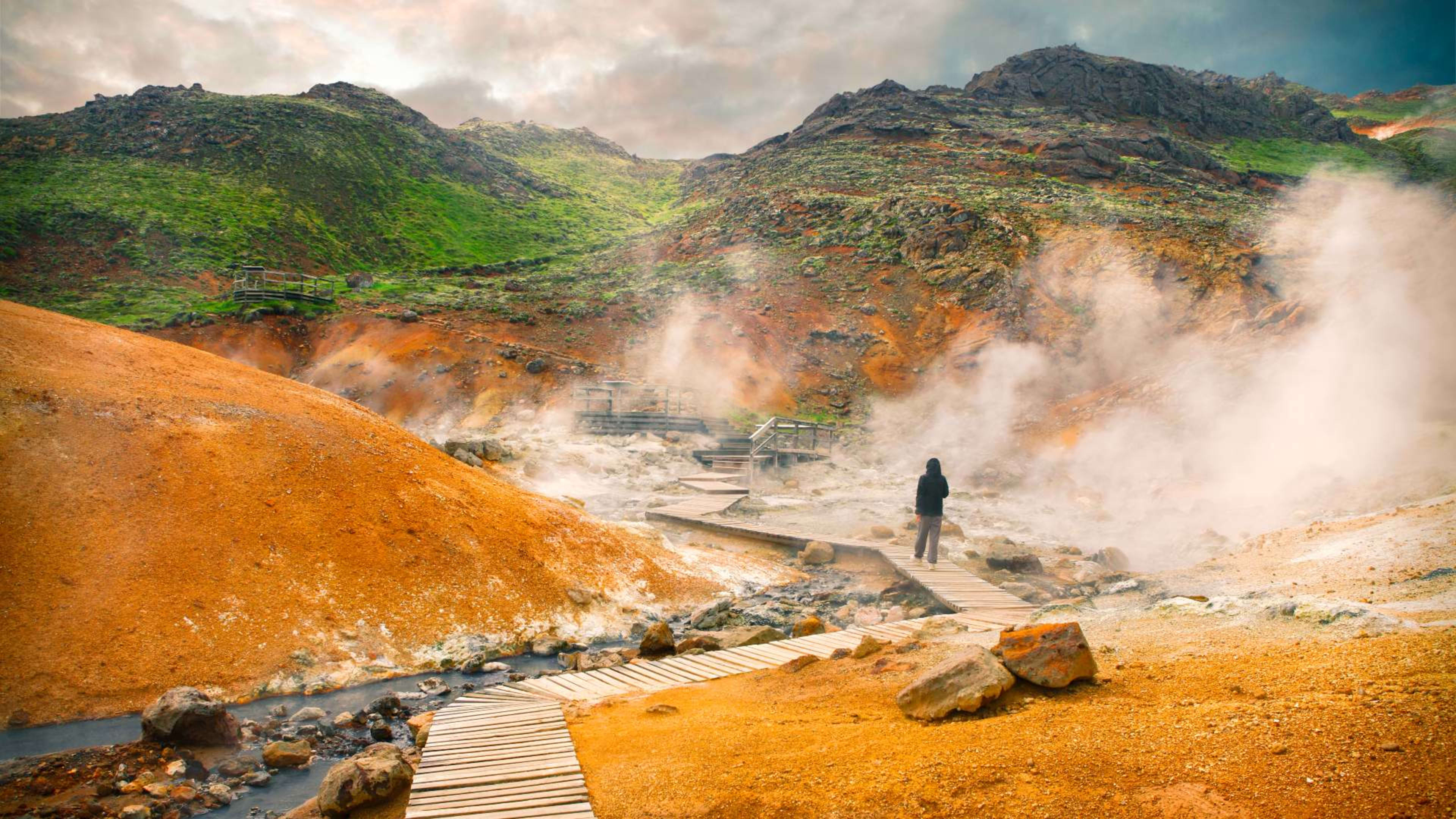You might have heard Iceland called the ‘Land of Fire and Ice’. Thanks to its northerly location, there’s ice in all forms, from snow to glaciers to icebergs. But what about the fire?
If you think about Iceland, 'volcano' might be one of the first words that springs to mind. So why are there so many in the country?
- See the country’s geothermal wonders with one of these Iceland volcano tours.
Iceland hovers above what geologists call a hotspot. This is basically a patch of the Earth where the mantle, deep below the ground, is unusually warm and active.
If you’ve ever seen a map of the world with ocean trenches, you might have noticed that Iceland sits bang on top of the Mid-Atlantic Ridge. In fact, it straddles two continents: North America and Eurasia.
As the tectonic plates supporting these continents drift apart, new land is formed. This is how Iceland was born, about 16 to 18 million years ago. Believe it or not, that’s actually pretty recent in geology terms!
So apart from the famous volcanoes, what other cool geological features can you find in Iceland? And how do Icelanders put all that geothermal energy to good use? Read on to find out. (Hint: it involves lots of hot tubs.)
- Stay up to date with the latest volcano activity in Iceland.
Iceland’s geothermal features
In Iceland, geothermal activity is much greater than in many other parts of the world. And you can see the jaw-dropping effect of this activity pretty much wherever you go in the country.
1. Volcanoes

First of all, volcanoes. Since 2000, there have been over half a dozen eruptions in Iceland. So there’s no doubt that the country’s volcanic systems are still very much alive and well.
Above you can see some of Iceland’s most famous volcanoes, along with the year they last erupted. You’ll notice that they’re spread all over the country, but mostly in an axis running from southwest to northeast.
Visiting Iceland’s volcanoes
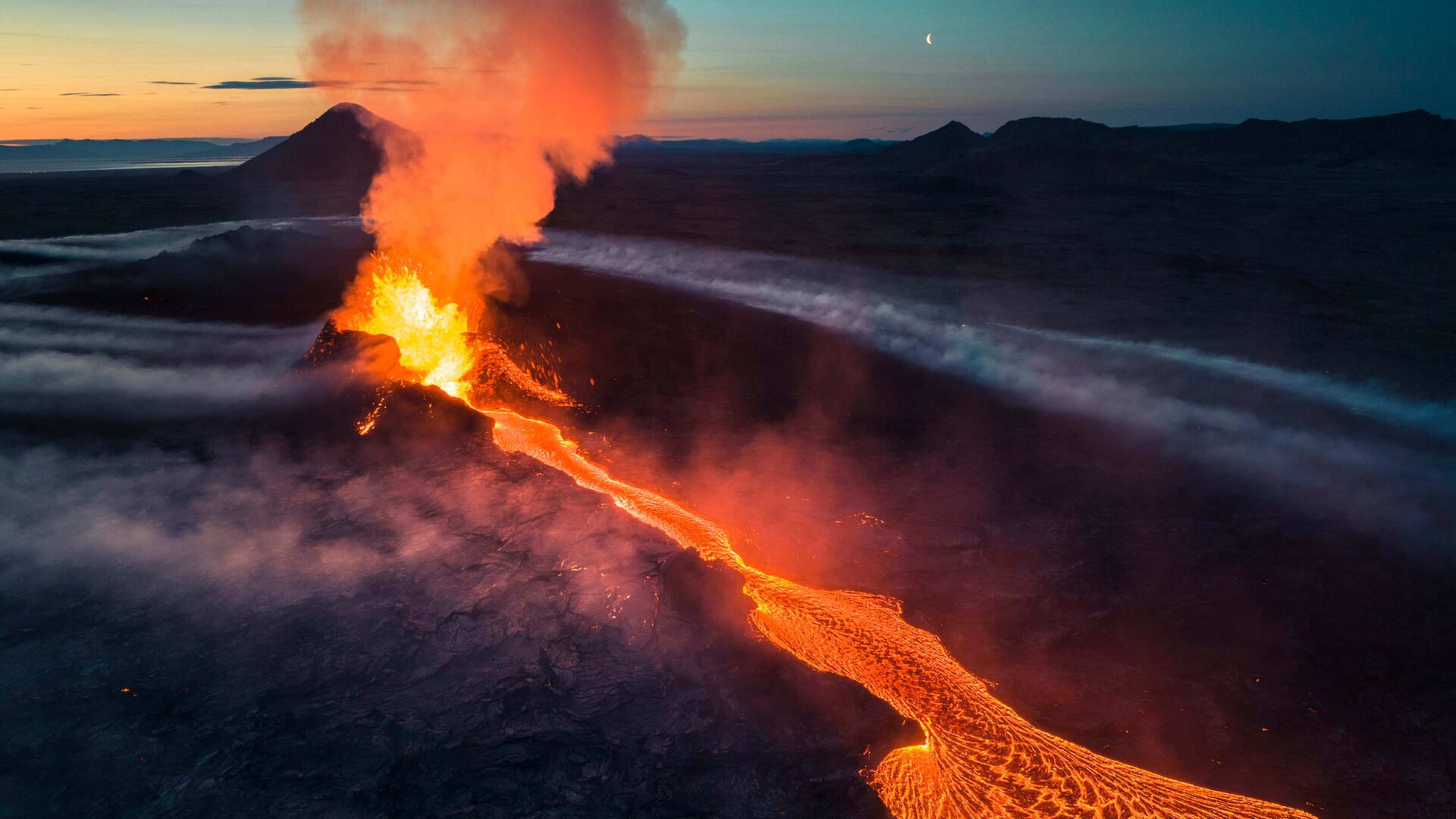
So can you see Iceland’s volcanoes? For sure! The most recent series of eruptions, at Fagradalsfjall on the Reykjanes peninsula, started in 2021. In the last few years, their freshly formed lava fields became a must-see attraction for visitors and locals, once it was safe enough to visit the sites.
That said, the peninsula is a geologically active area, so it’s important to always follow the safety advice of local authorities. This means staying away from the eruption site when it’s closed, and respecting road closures. To stay up-to-date with the latest safety information, visit SafeTravel Iceland.
- Blog: Your guide to the Fagradallsfjall eruption.
- See the country’s most famous volcanoes on an Iceland self-drive tour.
Another eruption that sparked interest around the world was Eyjafjallajökull in 2010. As you might have heard, this one spewed out a lot of ash and caused some disruption. You can still see black fields of ash in the valleys below the volcano to this day.
One that left a more permanent mark on the country was the 1963 Westman Islands eruption. The lava flow destroyed half the town on the main island of Heimaey. The eruption also gave birth to a whole new island, Surtsey.
If you visit Heimaey, make sure to stop at the Eldheimar Museum to hear the story of how the locals saved the island’s harbor. There you can also see an excavated house that was swallowed by the lava.
When will the next volcanic eruption in Iceland happen?
You might be wondering when the next Icelandic volcano will erupt. Volcanic activity is famously hard to predict.
The eruption could start tomorrow, or be years away. But their mystery is part of what makes following volcanoes so exciting! That said, scientists are constantly monitoring volcanic activity in Iceland. And Icelandic authorities, as well as locals, are highly prepared for these events.
2. Geysers
Did you know that Iceland gave us the word “geyser”? It comes from Geysir, the Icelandic name for a specific hot spring in South Iceland. Today, Geysir is dormant, but its younger brother Strokkur is still active.
- See the Geysir geothermal area on a guided group tour of Iceland.
Strokkur erupts every 10 minutes or so. But what makes it spout those jets of hot water? Well, groundwater heated by the rock collects in a small chamber underground. When the water reaches a certain pressure, it bursts out forcefully through a hole in the Earth.
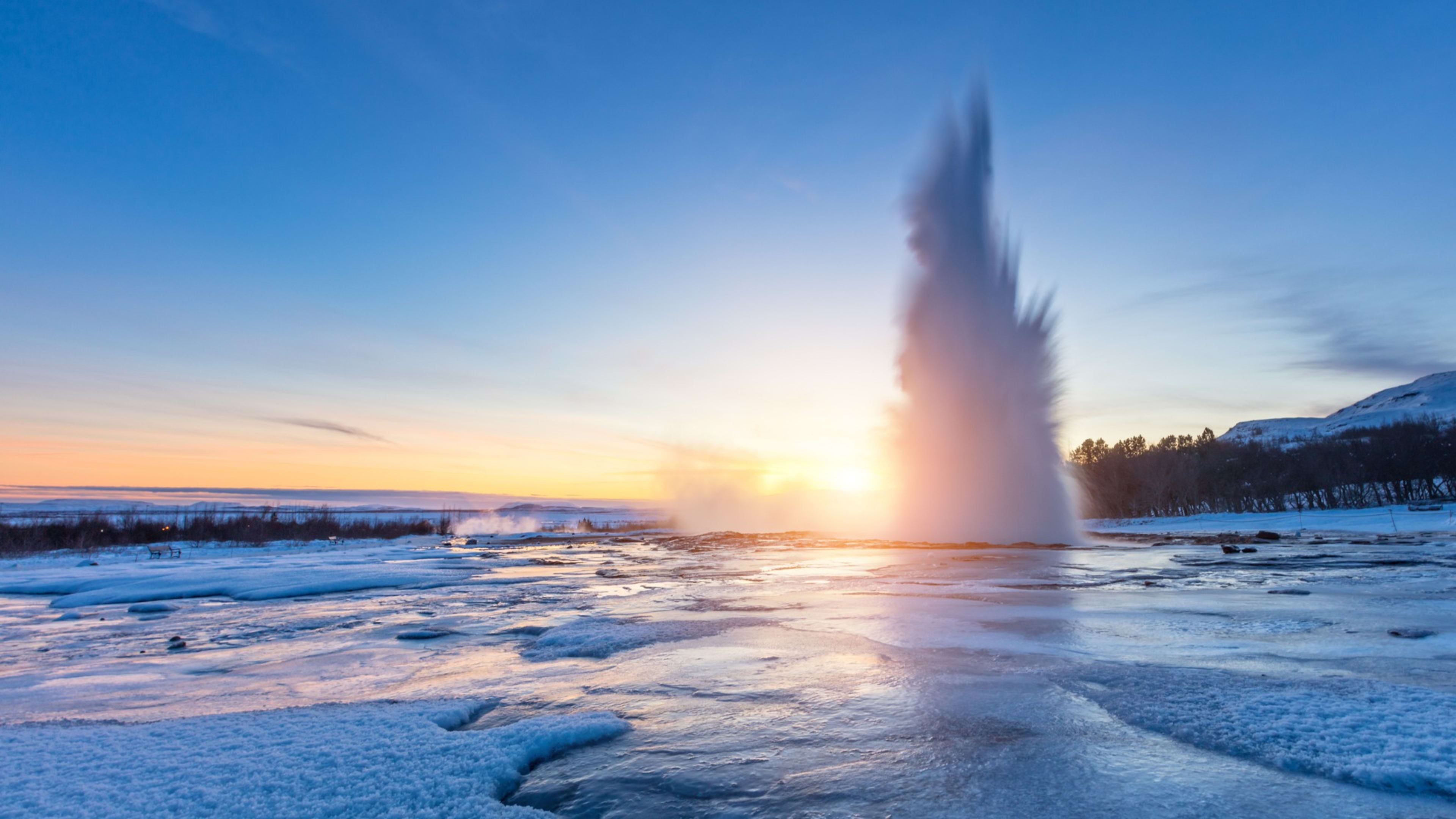
There are a few other geysers around Iceland, but they are mostly dormant. So if you want to see a classic geyser in action, head to Strokkur on the Golden Circle route.
- See the Geysir area on a Golden Circle tour.
3. Hot springs
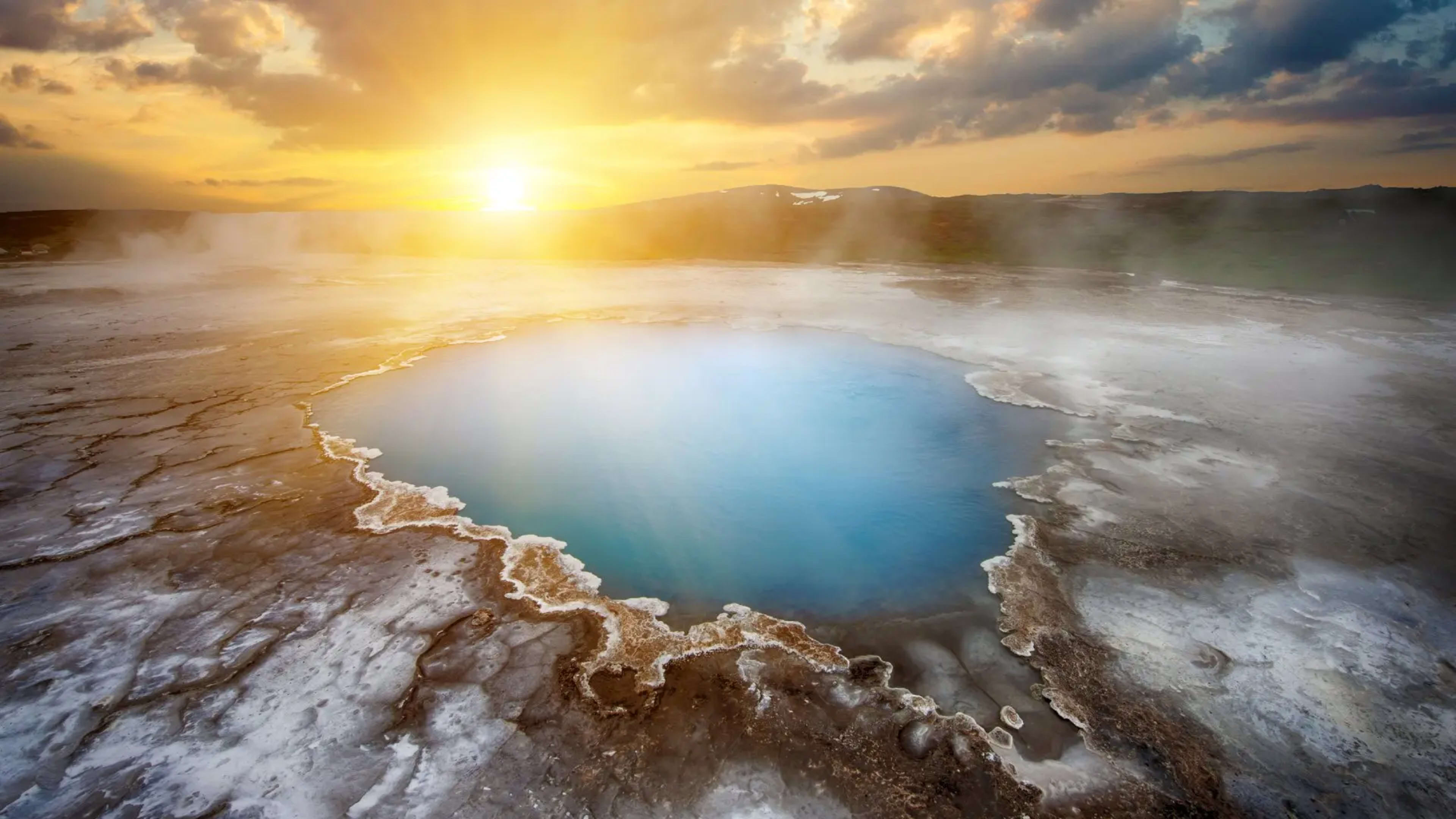
You can find hot springs in lots of parts of Iceland. Many of them are really quite hot, with water reaching around 70°–90°C (160°–195°F) at the surface. So far too hot for you to dip into, but not bad for boiling an egg. (Don’t try this yourself!)
Some examples of hot springs in this temperature range include:
- Deildartunguhver – West Iceland
- Geysir – South Iceland (Here there are lots of small hot springs near the geysers.)
- Gunnuhver – Reykjanes peninsula
- Námaskarð – near Lake Mývatn, North Iceland
- Seltún – near Krýsuvík, Reykjanes peninsula
There are also cooler hot springs with temperatures in the range of 25°–40°C (75°–105°F). This means they’re often suitable for bathing, so bring your swimming gear!
Icelanders call these náttúrulaugar or “natural pools”. Some of the best are:
- Grettislaug – North Iceland
- Hellulaug – Westfjords
- Hrunalaug – near Flúðir, South Iceland
- Landmannalaugar – Highlands
Landmannalaugar is definitely the jewel in the crown of Iceland’s natural pools, but is only accessible in the summer due to its location in the highlands.

If you want to experience Icelandic hot pools, check out our suggestions in the spas and lagoons section below.
4. Mud pots
These are a pretty rare geological feature that forms in areas with less groundwater. Sand and dirt are dissolved in the little hot water there is, creating the effect of a bubbling cauldron.
You can often find them near hot springs, for example at Seltún in southwest Iceland. They come in all sorts of colors too – whilst they’re often gray, they can also be white, yellow, or brown.
How Iceland uses its geothermal resources
Icelanders are lucky to have access to such an endless natural energy source. We don’t waste its potential though: geothermal energy is used both for heating and electricity. You can see signs of this all over the country.
As geothermal energy is one of Earth’s abundant renewable energy sources, Icelanders are less dependent on fossil fuels than some other countries. If you’re looking for a green vacation destination, then it doesn’t get much more eco-friendly than Iceland.
Geothermal heating and hot water
When you visit, you might notice that Icelandic homes don’t have boilers or hot water tanks. You just turn on the tap, and you have (almost) infinite hot water from geothermal sources.
Geothermal energy in Iceland is also used for space heating in buildings. Having access to so much hot water is pretty handy given how chilly Iceland can get in the winter.

You might also notice a distinct smell from the hot water in Iceland. Some people describe it as sulfuric or a bit like boiled eggs. This odor is a side effect of how the water is heated up.
In some parts of the country, naturally hot groundwater is piped straight into homes. Because this water is heated directly in the ground, it picks up harmless minerals that create that boiled-egg odor.
In other areas, cold water is pumped underground, where it picks up the heat from the Earth’s crust. This water tends to smell a bit less!
Don’t worry about the smell though, it doesn’t linger on you. And after a day or two in Iceland, most people don’t notice it anymore.
Heated sidewalks
If you walk around Reykjavík in wintertime, you might notice that the snow doesn’t settle in certain areas. This is because some sidewalks in Iceland are actually heated. There’s so much hot water, we had to find some use for it!
This means there’s no need to clear these sidewalks after a snowstorm, making it easier for everyone to get around. Look out for them if you’re in Iceland in wintertime.
Swimming pools and hot tubs
Icelanders love their swimming pools, something you’ll definitely notice pretty soon after you arrive in the country. This is a part of Icelandic culture that we definitely recommend you try out!

Every town and village in Iceland has its own municipal pool. Alongside the main pool, there are often a series of hot tubs (known as heitir pottar or “hot pots” in Icelandic). It’s here that you’ll find the locals, chatting and relaxing after work.
There are normally a few different temperatures to choose from – anywhere between 36° and 41°C (97° to 106°F). Try different ones to see which you prefer. The water in all of these hot pots is heated geothermally.
And if you’re feeling brave, why not have a dip in the cold pot afterwards? This tends to be a chilly 5°–10°C (40°–50°F) but will definitely perk you up!
- Learn about Iceland’s bathing culture in our spas & hot springs guide.
Spas and lagoons
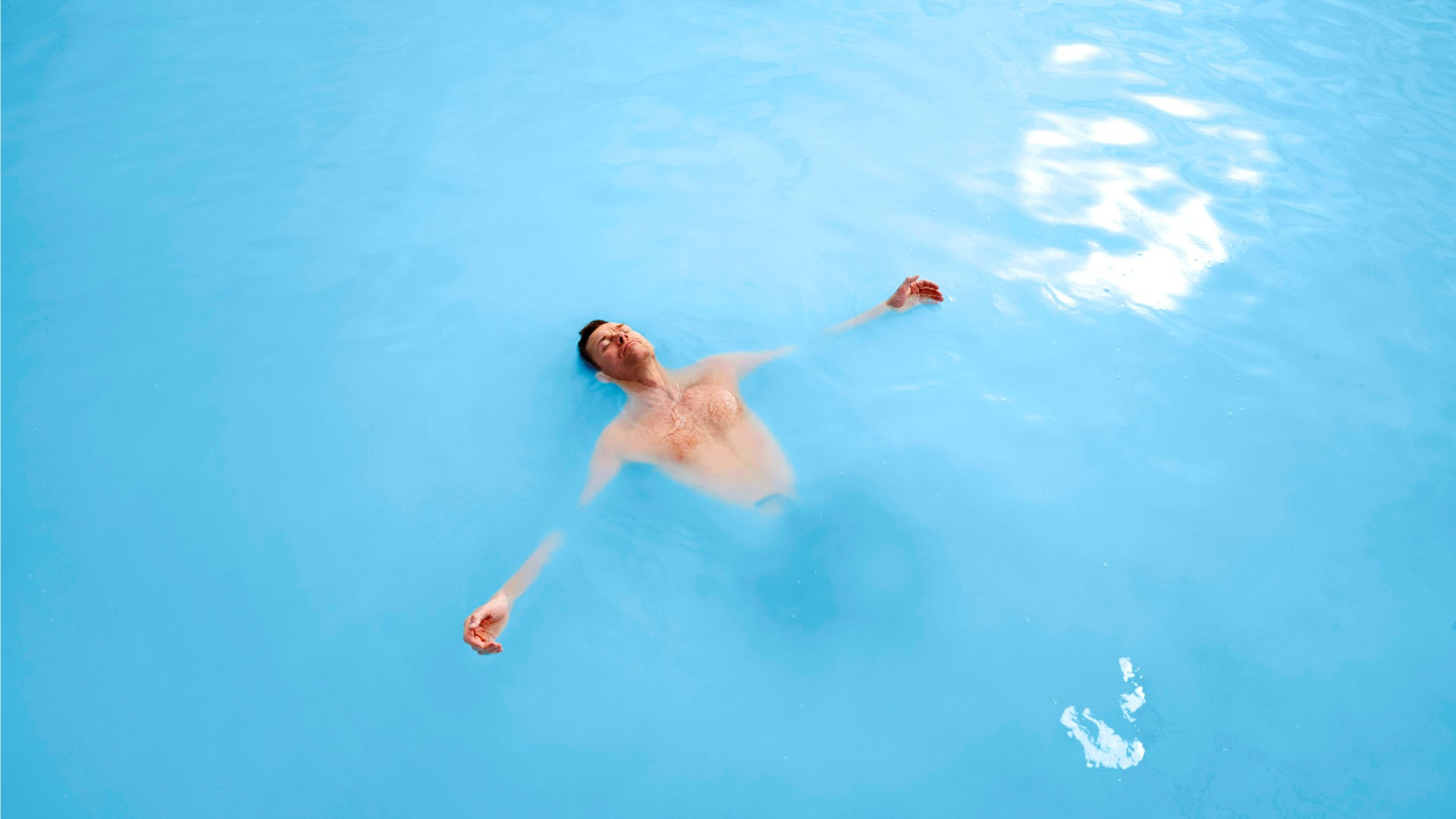
A relative newcomer on the Icelandic bathing scene is the geothermal spa. The first was the Blue Lagoon, which opened in 1992. Famous for its murky, bright blue water, the spa is a must on your Iceland itinerary.
There are now similar baths and spas all around the country. Why not check out one or two of the most famous:
- Fontana in Laugarvatn (South Iceland)
- Gamla Laugin, aka the Secret Lagoon, in Flúðir (South Iceland)
- Krauma at Deildartunguhver hot spring (West Iceland)
- Mývatn Nature Baths near Lake Mývatn (North Iceland)
- Sky Lagoon in Káranes (Reykjavík area)
Each of these lagoons has something different to offer. At Fontana, Gamla Laugin, and Krauma for example, you can bathe in breathtaking natural surroundings.
If you’re looking for more of a classic spa experience with beauty treatments, then the Blue Lagoon and Sky Lagoon are for you.
Read more in our guide to the best hot springs and geothermal pools in Iceland.
So now you’ve read all about Iceland’s amazing geothermal features, and seen some ways you can experience it for yourself.
If we’ve got you thinking about your own trip to Iceland, take a look at our vacation packages. We’ve got a whole host of routes, and all of them feature some of Iceland’s amazing active geology.
Check them out today and start planning your adventure in the Land of Fire and Ice!

